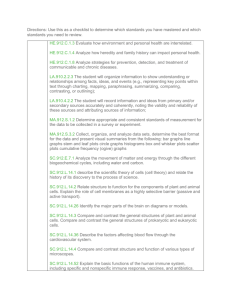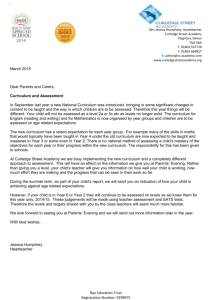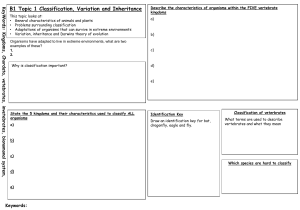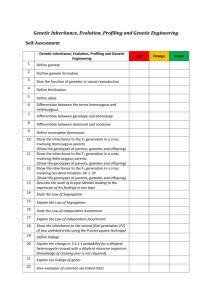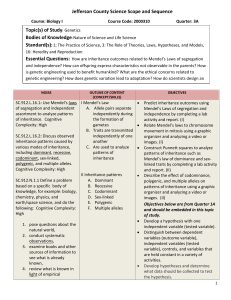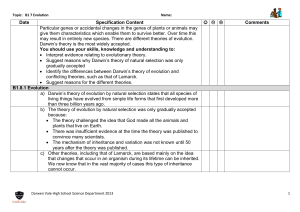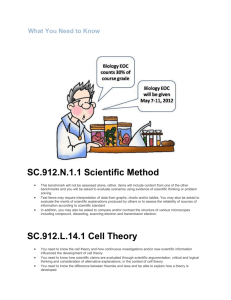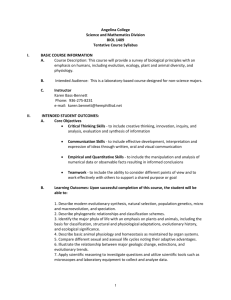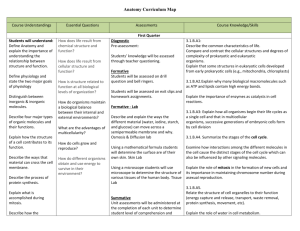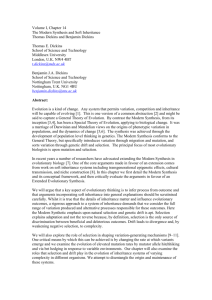Third Quarter Learning Standards
advertisement
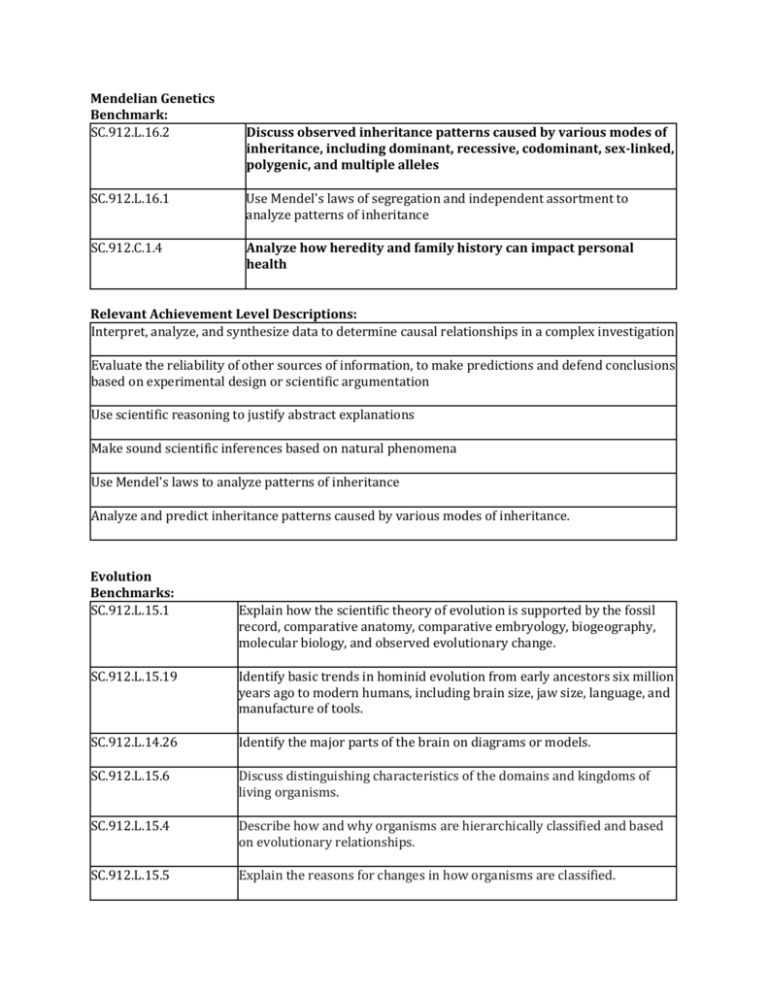
Mendelian Genetics Benchmark: SC.912.L.16.2 Discuss observed inheritance patterns caused by various modes of inheritance, including dominant, recessive, codominant, sex-linked, polygenic, and multiple alleles SC.912.L.16.1 Use Mendel's laws of segregation and independent assortment to analyze patterns of inheritance SC.912.C.1.4 Analyze how heredity and family history can impact personal health Relevant Achievement Level Descriptions: Interpret, analyze, and synthesize data to determine causal relationships in a complex investigation Evaluate the reliability of other sources of information, to make predictions and defend conclusions based on experimental design or scientific argumentation Use scientific reasoning to justify abstract explanations Make sound scientific inferences based on natural phenomena Use Mendel's laws to analyze patterns of inheritance Analyze and predict inheritance patterns caused by various modes of inheritance. Evolution Benchmarks: SC.912.L.15.1 Explain how the scientific theory of evolution is supported by the fossil record, comparative anatomy, comparative embryology, biogeography, molecular biology, and observed evolutionary change. SC.912.L.15.19 Identify basic trends in hominid evolution from early ancestors six million years ago to modern humans, including brain size, jaw size, language, and manufacture of tools. SC.912.L.14.26 Identify the major parts of the brain on diagrams or models. SC.912.L.15.6 Discuss distinguishing characteristics of the domains and kingdoms of living organisms. SC.912.L.15.4 Describe how and why organisms are hierarchically classified and based on evolutionary relationships. SC.912.L.15.5 Explain the reasons for changes in how organisms are classified. SC.912.L.15.8 Describe the scientific explanations of the origin of life on Earth. SC.912.L.15.13 Describe the conditions required for natural selection, including: overproduction of offspring, inherited variation, and the struggle to survive, which result in differential reproductive success. SC.912.L.15.14 Discuss mechanisms of evolutionary change other than natural selection such as genetic drift and gene flow. SC.912.L.15.15 Describe how mutation and genetic recombination increase genetic variation. SC.912.L.15.10 Identify basic trends in hominid evolution from early ancestors six million years ago to modern humans, including brain size, jaw size, language, and manufacture of tools. Recognize that the strength or usefulness of a scientific claim is evaluated through scientific argumentation, which depends on critical and logical thinking, and the active consideration of alternative scientific explanations to explain the data presented. SC.912.L.15.19 SC.912.L.14.27 Identify the functions of the major parts of the brain, including the meninges, medulla, pons, midbrain, hypothalamus, thalamus, cerebellum and cerebrum. SC.912.L.14.36 Describe the factors affecting blood flow through the cardiovascular system. Explain the evidence supporting the scientific theory of the origin of eukaryotic cells (endosymbiosis). SC.912.L.14.5 SC.912.L.14.52 SC.912.L.14.6 SC.912.L.15.2 SC.912.L.15.3 SC.912.L.16.10 Explain the basic functions of the human immune system, including specific and nonspecific immune response, vaccines, and antibiotics. Explain the significance of genetic factors, environmental factors, and pathogenic agents to health from the perspectives of both individual and public health. Discuss the use of molecular clocks to estimate how long ago various groups of organisms diverged evolutionarily from one another. Describe how biological diversity is increased by the origin of new species and how it is decreased by the natural process of extinction. Evaluate the impact of biotechnology on the individual, society and the environment, including medical and ethical issues. Honors extension. Not directly assessed EOC assessed Honors extension. Not directly assessed EOC assessed EOC with SC.912.L.14.52 Not directly assessed Not directly assessed Not directly assessed
